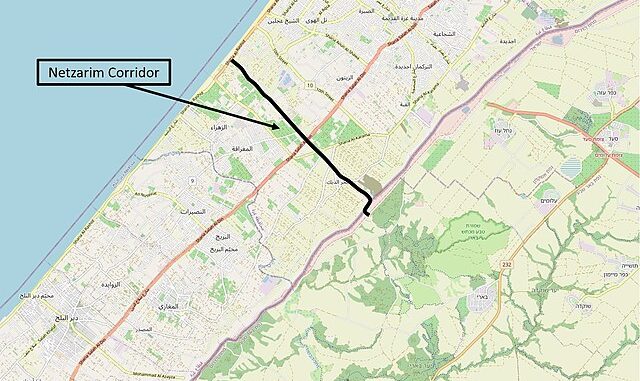FDD | Mar 20, 2025
Latest Developments
- IDF Retakes Netzarim: The IDF confirmed on March 19 that it had regained military control over parts of the Netzarim Corridor, which runs from Gaza’s Mediterranean coast to the territory’s eastern border, bisecting the Palestinian enclave. Israeli ground forces had previously withdrawn from the key corridor on February 8 as part of January’s ceasefire agreement with Hamas that expired on March 1. The move followed Israel’s resumption of military operations in the Gaza Strip after talks to release additional hostages and extend the ceasefire stalled.
- Rockets From Gaza: Hamas fired three long-range rockets at Israel from the southern Gaza Strip on March 20. The Israeli Air Force intercepted one of the rockets, while the other two fell in open areas, according to an IDF statement. There were no reports of injuries from the attack, which marked the first time since October 7, 2024, that Hamas fired rockets at Israel.
- Missile From Yemen: In the morning hours of March 20,the Iran-backed Houthi terrorists in Yemen fired a missile at Israel, triggering sirens across the center of the country, including in the Jerusalem and Tel Aviv areas. The IDF confirmed that the missile was intercepted before it entered Israeli airspace.
FDD Expert Response
“The IDF recaptured part of the Netzarim Corridor in 24 hours with no reported casualties on the Israeli side. Hamas still exists as a terror organization but is nothing close to the fighting force it was on October 7, 2023, and Jerusalem appears determined to ensure that Hamas remains weakened and eroded.” — Enia Krivine, Senior Director of FDD’s Israel Program and National Security Network
“Hamas and allied terrorist groups in Gaza have so far responded minimally since the collapse of the ceasefire deal, suggesting they are conserving ammunition due to a dwindling rocket supply. Once characterized by heavy barrages, rocket fire has been reduced to a few launches. Notably, the first phase of the ceasefire granted Hamas nearly two months to resume rocket production. However, war-damaged manufacturing equipment, a shortage of essential materials, and limited time likely constrained their efforts to produce projectiles in significant quantities.” — Joe Truzman, Senior Research Analyst and Editor at FDD’s Long War Journal
“The Houthis are still seeking to cement themselves as Iran’s leading terror proxy and fill the gaps left by Hamas and Hezbollah. Missile attacks against Israel, even if unsuccessful, are an attempt to portray strength at a time when the group finds itself facing a lethal United States military campaign.” — Bridget Toomey, Research Analyst
“Hamas today is far weaker than it was when it launched its attack against Israel on October 7, 2023. A year and a half of war has significantly depleted its senior leadership, reduced its rocket supply, and hindered the training of its pool of entry-level terrorist recruits. Despite this, it still retains the ability to launch limited rocket attacks against Israel. It is likely that Israel used the ceasefire period to gather intelligence on the remaining capabilities of the Iran-backed group, enabling the IDF to develop a sound military strategy for its renewed ground operations.” — Aaron Goren, Research Analyst and Editor
FDD Background and Analysis
“Israel Announces New Ground Operations in Gaza,” FDD Flash Brief
“Israeli Strikes on Gaza Resume as Hamas Refuses to Release Hostages,” FDD Flash Brief
“Can Hamas ever be defeated?” by Seth J. Frantzman
“‘Psychological Warfare’: Hamas Rejects U.S. Proposal, Israeli Delegation Called Back From Doha,” FDD Flash Brief




Leave a Reply
You must be logged in to post a comment.